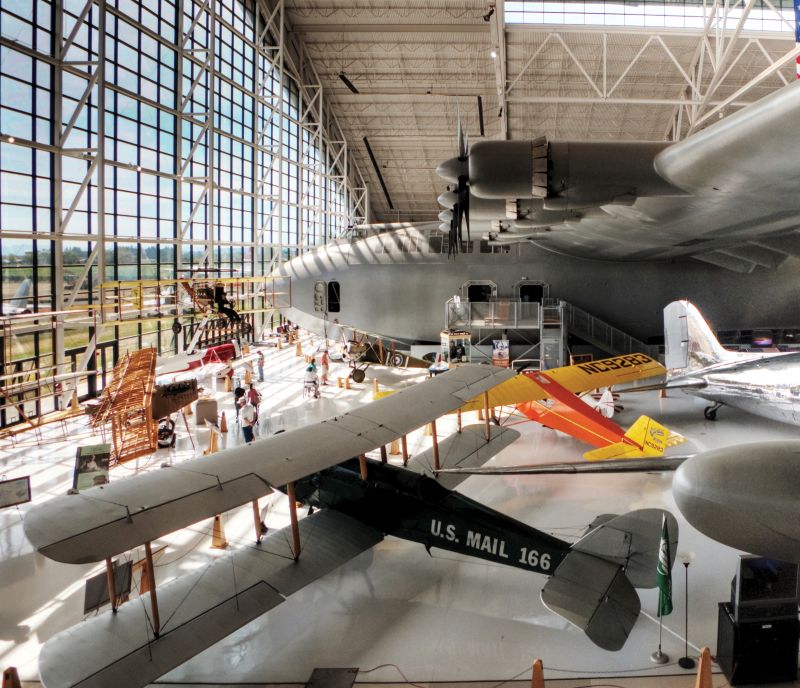The Legacy of the Spruce Goose: Howard Hughes’ Iconic Aircraft
A Brief Overview of the Spruce Goose
More than 66 years after it first flew, Howard Hughes’ gigantic, wooden H-4 Hercules — nicknamed the Spruce Goose — still holds the record for one of the widest wingspans of any airplane ever built, measuring an impressive 320 feet. Currently, it is housed at the Evergreen Aviation & Space Museum in McMinnville, Oregon.

The Construction of the H-4 Hercules
At the time of its construction, the Spruce Goose was the world’s largest airplane. Consequently, it had to be transported in segments from its construction site on the west side of Los Angeles to its Long Beach hangar. This enormous project showcased the ambitious vision of Howard Hughes and his engineering team.

The Historic Flight
On November 2, 1947, Hughes piloted the H-4 during its inaugural and sole flight. This flight occurred in California’s Long Beach harbor, where the seaplane lifted off and flew for approximately one mile, reaching an altitude of about 70 feet. Despite its successful takeoff, Hughes believed the aircraft required additional development. Therefore, he stored it in a hangar and never allowed it to fly again.

Controversies and Reflections
Hughes, an ambitious businessman, engineer, film producer, and pilot, passed away in 1976 at the age of 70. The question of whether the Spruce Goose was a failure remains subjective. While Hughes proved that the aircraft could fly, it was never officially certified by aviation authorities. Lawmakers questioned Hughes regarding the allocation of $22 million of taxpayer money on an aircraft that only flew once. In defense, Hughes highlighted that he had invested an additional $18 million of his own funds for its development.

Significance in Aviation History
The Spruce Goose was designed with the intention of transporting over 700 troops across the ocean, thus circumventing threats posed by enemy submarines during wartime. This strategic innovation exemplifies the blending of technology and military need during its era.

Conclusion
The story of the Spruce Goose, from its impressive construction to its fleeting flight, remains a fascinating chapter in aviation history. It encapsulates the bold vision and ambition of Howard Hughes, and despite its limited operational history, it continues to attract interest and admiration from aviation enthusiasts and historians alike. Therefore, visiting the Evergreen Aviation & Space Museum offers a unique opportunity to appreciate this monumental engineering feat and the legacy it left behind.





